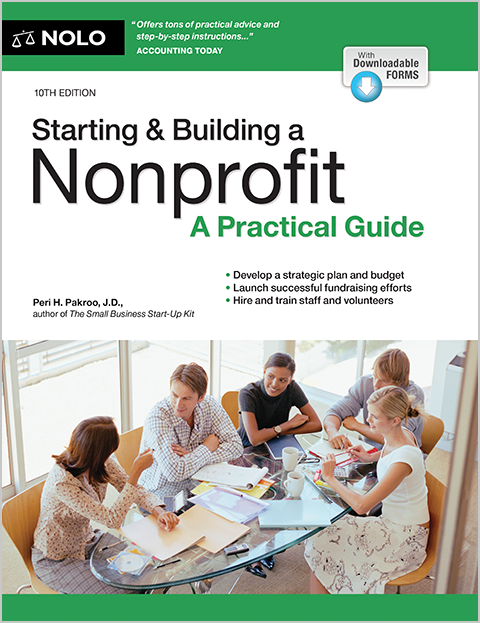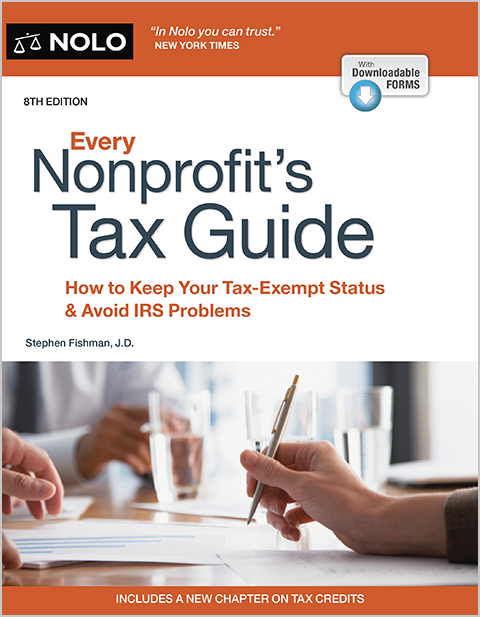Find out how to go about dissolving a nonprofit corporation in your state.
Nonprofits could close because they're no longer able to get the necessary funding, the trustees or members have irreconcilable differences, or the organization simply decides that it has met its goals and no longer needs to exist. Whatever the underlying reason, you will need to go through a process called dissolution in order to close down your Ohio nonprofit corporation. Dissolution requires a vote or other formal authorization, the filing of key documents with government agencies, and a group of other tasks known as winding up the corporation.
The specific steps for closing an Ohio nonprofit will vary depending on several basic facts. Bearing that in mind, this article is limited in the following ways:
- it only covers nonprofit corporations (not all nonprofits are incorporated)
- it only covers nonprofits that have applied to the IRS and been approved as 501(c)(3) tax-exempt organizations
- it only covers voluntary dissolution by the nonprofit's members (a nonprofit may be involuntarily dissolved through a court order, or, in special circumstances, solely by the action of the nonprofit's directors); and
- it does not cover court-supervised voluntary dissolutions (at a certain point during a voluntary dissolution, various people can ask a court to step in and supervise matters, including appointing a receiver to manage the dissolution process).
Benefits of Formal Dissolution
Your nonprofit corporation is registered with the State of Ohio. Through the dissolution process, you will officially cancel that registration and officially end the corporation's existence. For a nonprofit that's closing down, a properly handled dissolution achieves at least two important goals. First, it puts your organization beyond the reach of creditors and other claimants. Second, it allows you to fulfill your legal obligations regarding the proper distribution of any remaining corporation assets.
Certain Matters are Unchanged by Dissolution
Note that dissolution alone generally does not block pending legal actions, suits, or proceedings by or against your nonprofit.
Authorizing Dissolution
Under Ohio's Nonprofit Corporation Law ("NCL"), your nonprofit's voting members must authorize dissolution by voting to adopt a resolution to dissolve. In many states, it is possible to authorize dissolution by a vote of a nonprofit's directors. However, Ohio law only allows directors, acting alone, to authorize dissolution in special circumstances, such as bankruptcy, when all assets have been sold at a judicial sale, or otherwise with the permission of a state court. The member vote generally must take place at a member meeting, and members must be given advance notice of the meeting. By default, approval of dissolution requires a majority vote of the members; however, your articles of incorporation or other regulations may allow for approval by a different number or percentage of members.
Make sure to properly record the resolution to dissolve and the members' votes. You'll need this information for filings with the state and the IRS.
Certificate of Dissolution (Form 560)
After dissolving your nonprofit, you must file a certificate of dissolution with the Secretary of State ("SOS"). Along with the certificate, you must submit additional documents relating to taxes and other issues.
The certificate of dissolution must contain:
- the name of your nonprofit
- a statement that a resolution of dissolution has been adopted
- a statement of the manner of adoption of such resolution ("by the Members pursuant to Ohio Revised Code section 1702.47(D)")
- the place in Ohio where your organization's principal office is located
- the names and addresses of your nonprofit's directors and officers
- the name and address of your nonprofit's statutory agent; and
- the date of dissolution if other than the filing date (the date of dissolution cannot be more than 90 days after the filing of the certificate of dissolution).
The certificate is signed by an authorized officer. If an authorized officer fails to sign and file the certificate within 30 days of dissolution, other signature rules apply.
There is a $50 fee to file the certificate. You should use the certificate of dissolution form published by the SOS. The form is part of a group of nonprofit dissolution forms and instructions available on the SOS website as a single downloadable file—Form 560. Your filing typically will be processed in three to seven business days. Various forms of expedited processing, listed on Form 560, are available for additional fees.
Tax and Other Clearances
The State of Ohio requires that you submit additional documentation with your certificate of dissolution, including:
- a tax clearance certificate from the DOT showing that the nonprofit has paid all taxes due as of the date of dissolution, or an affidavit stating that the nonprofit is not required to pay or the DOT has not assessed any such tax (use DOT Form D5 to request a tax clearance certificate); and
- evidence from the director of Job & Family Services ("JFS") showing that all contributions due from the nonprofit as an employer have been paid, or that payment has been adequately guaranteed, or that the nonprofit is not subject to such contributions.
In place of these documents, you may be able to submit a single affidavit. To use this option, you must (a) notify the DOT and JFS in writing of the effective date of your nonprofit's dissolution, and (b) state that your nonprofit acknowledges the applicability of section 1702.55 of the Ohio Revised Code which makes nonprofit directors who agree to illegal distributions of the nonprofit's assets personally liable for those wrongful distributions. An affidavit form is included as part of the Form 560 package.
"Winding Up"
Following your members' authorization of dissolution, your corporation continues to exist only for the purpose of taking care of certain final matters that, collectively, are known as "winding up" the company. The NCL states that the directors "shall proceed as speedily as is practicable" to wind up the corporation. The NCL contains an extensive list of potential winding-up tasks; however, in brief, winding up is largely about paying off any debts and then distributing any remaining assets (though there may also be other tasks involved). It may be appropriate to designate one or more officers or directors to handle these matters.
Generally speaking, you can only distribute money and property after you have paid off all of your nonprofit's debts. For distributions, the NCA has specific rules you will need to follow. For example, your nonprofit must return any items that were loaned to it on the condition that they would be returned upon dissolution. In addition, after paying off debts and returning loaned assets, a dissolving 501(c)(3) organization must distribute its remaining assets for tax-exempt purposes. In practice, this usually means distributing assets to one or more other 501(c)(3) organizations. Other distribution rules, contained in your articles of incorporation, bylaws, or a plan of distribution, may also apply. If you have any questions, you should consult with a lawyer.
Notice to Creditors and Other Claimants
You must give notice of your nonprofit's dissolution to creditors and other claimants. Under the NCL, there are two different notice requirements. First, you must mail notice to each known creditor that has a claim. Second, you must also publish the same notice at least once a week for two consecutive weeks in a newspaper published and of general circulation in the county where your nonprofit's principal office is located.
Federal Tax Note
For federal tax purposes, you'll need to file IRS Form 990 or IRS Form 990-EZ. You must include a completed Schedule N (Liquidation, Termination, Dissolution, or Significant Disposition of Assets), as well as copies of your articles of dissolution, resolution to dissolve, and plan of dissolution. When completing Form 990 or Form 990-EZ, you'll need to check the "Terminated" box in the header area on Page 1 of the return. For additional, more specific guidance, check out Every Nonprofit's Tax Guide, by Stephen Fishman (Nolo), go to the IRS website, or consult with a tax professional.
Additional Information
For forms, instructions, mailing addresses, telephone and fax numbers, filing fees, and similar information, check the SOS website and the DOT website.
Dissolving and winding up your nonprofit corporation is only one piece of the process of closing your organization. For further, general guidance on many of the other steps involved, check Nolo's 20-point checklist for closing a business and the Nolo article on what you need to know about closing a business.



